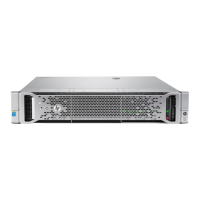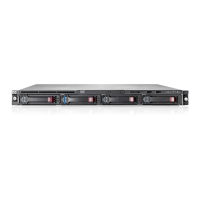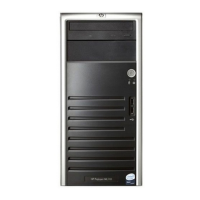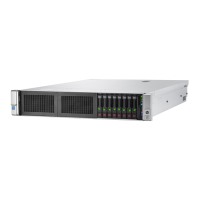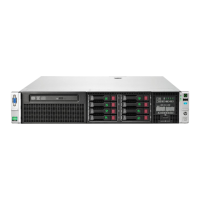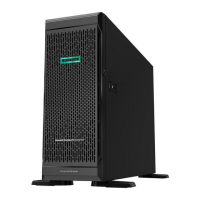Hardware problems 37
Server fails to recognize existing memory
Action:
1. Reseat the memory.
2. Be sure the memory is configured properly. Refer to the server documentation.
3. Be sure a memory count error ("Memory count error exists" on page 36) did not occur. Refer to the
message displaying memory count during POST.
Server fails to recognize new memory
Action:
1. Be sure the memory is the correct type for the server and is installed according to the server
requirements. Refer to the server documentation or HP website (http://www.hp.com
).
2. Be sure you have not exceeded the memory limits of the server or operating system. Refer to the
server documentation.
3. Be sure no Event List error messages (on page 114) are displayed in the IML ("Integrated
Management Log" on page 56).
4. Be sure the memory is properly seated.
5. Be sure no conflicts are occurring with existing memory. Run the server setup utility.
6. Test the memory by installing the memory into a known working server. Be sure the memory meets
the requirements of the new server on which you are testing the memory.
7. Replace the memory. Refer to the server documentation.
PPM problems
Action: If the PPMs are not integrated on the system board:
CAUTION: Do not operate the server for long periods with the access panel open or removed. Operating
the server in this manner results in improper airflow and improper cooling that can lead to thermal damage.
1. If applicable, check the PPM LEDs to identify if a PPM failure occurred. For information on LEDs, refer
to the server documentation.
2. Reseat each PPM, and then restart the server.
3. If reseating the PPMs is not effective, remove all but one PPM, restart the server to see if the PPM is
working, and then install each PPM individually, cycling power each time. Follow the warnings and
cautionary information in the server documentation.
Processor problems
Action:
1. If applicable, check the processor LEDs to identify if a PPM failure occurred. For information on LEDs,
refer to the server documentation.
2. Be sure each processor is supported by the server and is installed properly. Refer to the server
documentation for processor requirements.
3. Be sure the server ROM is up to date.
4. Be sure you are not mixing processor stepping, core speeds, or cache sizes if this is not supported
on the server. Refer to the server documentation for more information.
CAUTION: Removal of some processors and heatsinks require special considerations for replacement,
while other processors and heatsinks are integrated and cannot be reused once separated. For specific
instructions for the server you are troubleshooting, refer to processor information in the server user guide.

